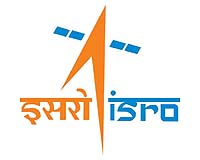 |
Hampton VA (SPX) Aug 19, 2010 If ping-pong balls can float a sunken boat, they should be able to keep an uncrewed space capsule simulator from sinking. Right? That's what a team of summer students and engineers think at NASA's Langley Research Center in Hampton, Va. Langley is fabricating a proposed design of an astronaut crew module simulator for uncrewed flight-testing as part of the agency's effort to build a vehicle to replace the space shuttle. Because the crew module will not be pressurized during the test, it will not have the buoyancy of a pressurized spacecraft. This puts the simulated crew module at risk of sinking to the bottom of the Atlantic Ocean after splashdown. To save the valuable test article for analysis and possible reuse, Langley called on a team of creative minds for a solution. And as it turned out, inexpensive, lightweight ping-pong balls provided the answer. Langley engineer John DiNonno proposed the idea, and the Orion Flight Test Office told the team to study it. The idea quickly became "very plausible," said student Caroline Kirk.
Way to go She and a team of seven other students worked the project in Langley's Mechanical Systems Branch, where they were assigned for the summer. DiNonno got the idea from a Discovery Channel program about raising a sunken boat using 27,000 ping-pong balls. Engineer David Covington said that when DiNonno suggested the ping-pong ball idea, "I just laughed. Not a 'what are you thinking' kind of laugh, but more of a 'that's the most awesome thing I've heard in a long time' laugh. I asked him 'are you serious?' and he said 'yeah, we're authorized to do a four-week study.' So we went straight to work." Ensuring the outcome would be relatively low-cost was a top priority, said DiNonno. "Recovering the capsule was not a requirement, but it was a desire," he said. "So there wasn't going to be a lot of investment in it."
Testing process They tested ping-pong balls of varying quality, much the way spacecraft hardware is tested. They studied how the balls would react to the near-vacuum at the edge of space. Using buoyancy tests, they determined how well the balls would float. The students also subjected the ping-pong balls to mechanical loads using a hydraulic press, and heated them to see how they would react to the high temperatures of descent into the Earth's atmosphere. And they performed electrostatic discharge tests to determine if the balls would produce a static charge that could disrupt the space capsule's electronics. The ping-pong balls passed all the challenges, said Heather Blount, a materials science engineering student at Virginia Tech. "Through all our testing and calculations, we figured out that it could be a safe and viable option," said Blount, of Yorktown, Va. Keeping the crew module afloat would take at least 150,000 ping-pong balls, the students estimate, at a retail price of 50 cents or less each - a fraction of the cost of traditional options. The students hope to reduce the cost through a bulk purchase. If the flight test is approved, the ping-pong ball concept would still need to be vetted with the flight test team and reviewed by NASA senior management. If implemented, the ping-pong balls probably will be put into netted bags and secured inside the crew module just prior to launch. They would virtually fill the available space inside the uncrewed capsule. Then, when the unsealed capsule splashes down, the buoyancy of the ping-pong balls will offset the weight of incoming water and it will float instead of sink. The ping-pong balls also will reduce the volume of air that needs to be vented from the capsule during ascent - as well as drawn in during descent - as the capsule travels through significant changes in atmospheric pressure.
'Awesome' students Cutright said she has been enthused by the students. "It's awesome working with them," she said. "They bring a different perspective. I've been really impressed with how quickly they pick up new ideas and new technology. It seems each team of students that we mentor learns quicker and is able to provide creative ideas." Kirk said the ping-pong ball project has been a unique experience. At school, she said, "we do lab experiments but nothing similar to this at all. Being able to develop an experiment that will be used for space flight tests is an opportunity of a lifetime." NASA employees and contractors involved in the project include engineers Amanda Cutright; Brendan Shaughnessy, Analytical Services and Materials Inc.; David Covington, ATK Space Systems Inc.; and John DiNonno, all of the Mechanical Systems Branch.
Share This Article With Planet Earth
Related Links Langley Research Center Space Tourism, Space Transport and Space Exploration News
 ISRO Planning To Send Astronauts To Space Before 2015-16
ISRO Planning To Send Astronauts To Space Before 2015-16Chandigarh, India (PTI) Aug 16, 2010 The Indian Space Research Organization is planning to send astronauts to space before the year 2015-16, deputy project director of ISRO's Chandrayaan MissionJaswinder Singh Khoral said. Khoral was addressing the students at the Haryana Space Science Congress Programme at Faridabad which was organized by Space Applications Centre, Hisar on the occasion of the birth anniversary of Dr Vikaram ... read more |
|
| The content herein, unless otherwise known to be public domain, are Copyright 1995-2010 - SpaceDaily. AFP and UPI Wire Stories are copyright Agence France-Presse and United Press International. ESA Portal Reports are copyright European Space Agency. All NASA sourced material is public domain. Additional copyrights may apply in whole or part to other bona fide parties. Advertising does not imply endorsement,agreement or approval of any opinions, statements or information provided by SpaceDaily on any Web page published or hosted by SpaceDaily. Privacy Statement |